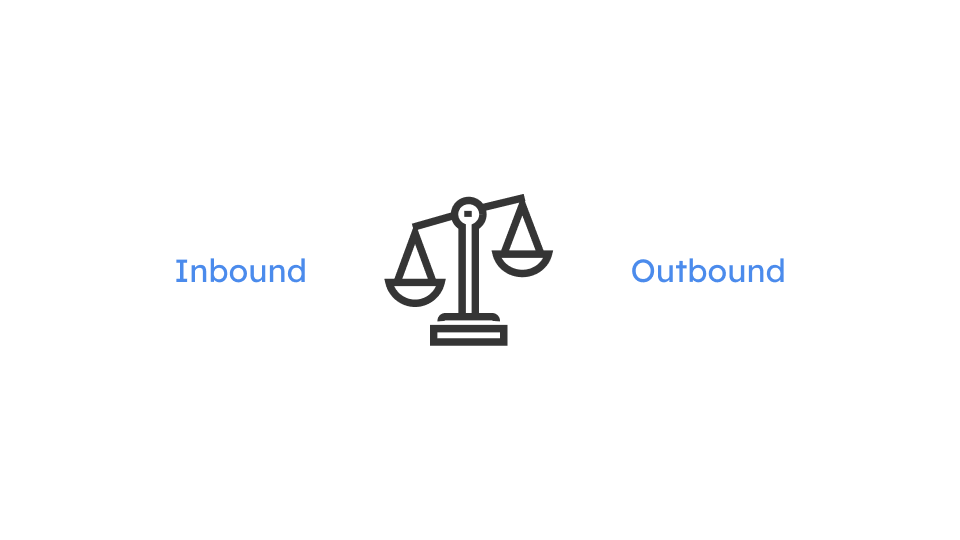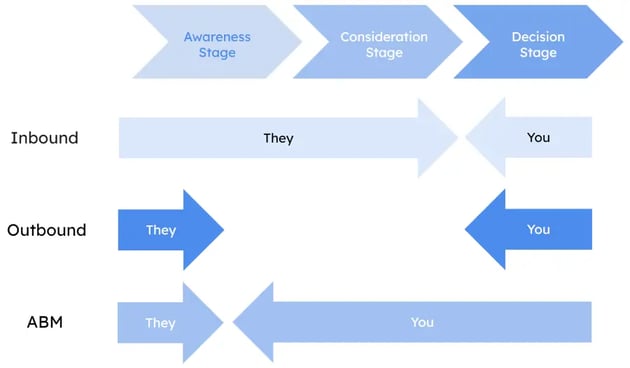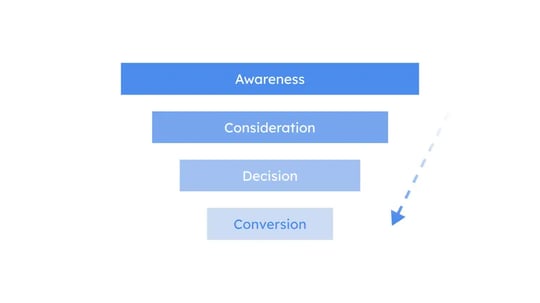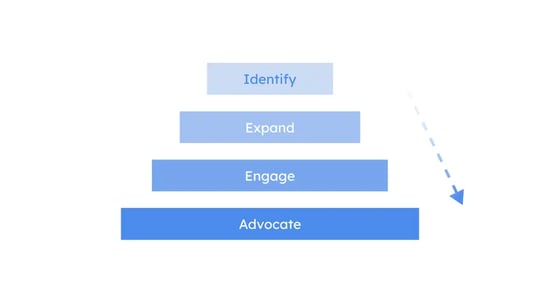5 tips to make your SaaS company video pop
There are many ways to use video content in B2B SaaS marketing. Here are our top five best practices to keep in mind when designing and creating...

There's a fine balance companies must strike between inbound marketing and outbound marketing.
Many innovative SaaS Companies are "creating a category". They are solving problems many of their potential customers don't even realize they have. While it's critical to have inbound marketing, where your audience is "doing the work" to find you, you also need to drive awareness with the part of your "Ideal Customer Profile" audience that is not actively looking for your solution.
I like to complement inbound marketing with an effective outbound approach to "knock on the doors" of the right suspects. These are potential prospects who might not even realize they have a need. If you have done the hard work of building something that is proving to be valuable for a large group of customers who "Pay and Stay", and you have reached so called Product Market Fit, you now have an obligation to understand what your Ideal Customer Profile (or Ideal Customer Prospect) looks like, and to go make sure they know about what you have to offer. It's key though to do this with relevant messaging and helpful content, not a cold sales pitch.
Traditional outbound tactics that employ email and other forms of interruption to deliver your "sales pitch" usually don't work for a couple of reasons:

To address some of these challenges, at Kalungi we have created a special flavor of "Account Based Marketing" that fits well with the needs of a B2B SaaS Go-to-Market strategy.
Both inbound and outbound target the Ideal Customer Profile (ICP) and Persona. Sometimes, we see B2B SaaS providers only manage inbound OR outbound well, while the other takes a backseat. Inbound and outbound deliver ROI at different times, making it important (yet difficult) to strike the right balance between the two. For most B2B SaaS companies, the best marketing mix includes inbound and outbound together, playing off each other to create a solid marketing plan.
Coined by Hubspot, inbound marketing is a marketing methodology that attracts customers by creating value-rich, personalized content experiences. By offering expertise and educational content, people who find you online will value you as a trustworthy, reliable connection that can solve their problems.
At Kalungi, we think of people who actively search for solutions to their problems as 'hand-raisers,' or people who are entering the inbound marketing funnel after they have already acknowledged they have a need:

On the other hand, outbound marketing is the more traditional method of marketing that involves interrupting your audience with content they may not want (or understand a need for). You have to create the Awareness, as your audience is typically in a natural state of inertia until they discover a pain they need a solution for.
In outbound marketing, the sales funnel starts at 'Identify' when the marketers identify someone that might be a good fit for their offering:

By identifying companies or individuals that look like your 'ideal customer profile,' you can target accounts that will most benefit from your offerings. This is called account-based marketing -- a term for thoughtful outbound marketing by understanding who you're trying to reach and tailoring your message to explain your value-added solution.
Another difference between inbound and outbound marketing (and why you need both) is that outbound activities, or your go-to-market strategy, can be deployed faster than your inbound strategy. However, outbound also has diminishing returns. There are only so many phone calls you can make, emails you can send, which can be inefficient if not done precisely.
The law of diminishing returns implies that as time goes on, impact slows down and at some point, you run out of scalability for your marketing efforts.
However, inbound is much more scalable and although it takes a little longer to get going, you have a much higher ceiling. That's why, when you're starting your marketing function and you have a couple of months to show your board members traction, you need a little bit of both. While the outbound function increases momentum, your inbound capabilities will allow you to scale very high over time.
Another aspect to consider between the differences of inbound and outbound marketing function is the impact on sales. Inbound marketing deals typically close faster as they’re considered “hand-raisers”, in the sense that these people swim into your funnel because they have a need, and they’ve filled out a form to request a demo.
Outbound deals take longer to drive through the funnel, because you have to find your ideal customer profile (those are the customers you can serve really well, they fit the value prop really well), the likelihood that the deals close with a bigger average contract value is higher.
So inbound revenue per unit is smaller, while outbound revenue per unit is higher. But again, the sales cycle within inbound marketing is probably shorter, where the sales cycle in outbound marketing is much longer. So that’s also important to realize because while outbound has quicker results that diminish over time, the sales cycle is actually longer.
You might get leads a little quicker because you go find them yourself and you’re in control and not waiting for people to click on links that have to start ranking over time, the sales cycle is longer because people are not expecting you.
As an example, let's say you sell a tree pruning service. You’re knocking on doors and interrupting people that seem a good fit, for example if they have a big tree branch hanging over their garage, but they may not be ready to buy your service yet or may not have a budget for it. The person opening the door might not be the decision maker, but the teenage kid. But now they’re in the funnel and they may buy your services later...and you should make sure you plan a follow up, and at least have a "leave behind". Once they buy though, the likely pay you exactly the right price because they have the exact problem you can solve for.
On the other hand, with inbound marketing, they already identified their problem and they’re saying “I need help,” but the problem they need to be solved might not be exactly what your highest value-added service is. Therefore, the price they end up paying might not be the highest.
Inbound leads are the type to get a follow up by SDRs, or sales development representatives, that are really optimized for taking incoming leads, or the “hand-raisers,” and quickly or with low friction, sending those into meetings with the sales team to close those deals. For outbound, this is fulfilled by the role of the BDR, or business development representative.
These words are a little confusing -- “sales” is used in SDR for the role that’s not really selling, you’re actually fulfilling incoming needs, but this happened to be the way that Salesforce started to use these terms a while ago. The SDR is usually the more junior role in the team, and as they learn how to have conversations with prospects, they’re maturing into a business development representative where they have to do the actual selling.
Because for BDRs, other than some type of outbound call, the conversations are very different. SDRs are fulfilling needs, while a BDR is really about understanding what the pain points their prospect has. How do we add value to help them go from feeling pain to believe what we have, add inertia, and help them answer the question “Why should I change?” to the question “Why you?” and then close those deals.
Finally, when you do outbound and inbound marketing, the follow-ups are a little bit different. Typical nurturing within inbound marketing is very much catered to what people are looking for and you’re trying to fulfill that need. For outbound marketing efforts, you’re cultivating relationships when you knock on the door and people open the door they’re actually not within your ICP, maybe they’re a good fit, just not today, the type of nurturing or cultivation you do here is a little different.
I believe that most B2B SaaS companies need to do both inbound and outbound marketing. Maybe not at the exact same time, but you have to find something that meets your short-term needs and your long-term scalability and have both capabilities in your marketing configuration.
If you’re still in the process of finding your right ICP for your inbound and outbound marketing efforts, why not take our ICP template away with you?
Stijn is Kalungi's co-founder and board member. He is a serial SaaS marketing executive and has over 30 years of experience working in software marketing. He is co-author of the T2D3 book and masterclass that helps startups drive exponential growth.
There are many ways to use video content in B2B SaaS marketing. Here are our top five best practices to keep in mind when designing and creating...
Discover how founder-led growth in B2B SaaS can signal early success but also become a ceiling for scalability if not managed properly. Learn to...
Find the CRM that provides the interconnectivity you need to maximize your customer journey and unlock your B2B SaaS growth.
Be the first to know about new B2B SaaS Marketing insights to build or refine your marketing function with the tools and knowledge of today’s industry.